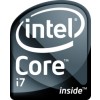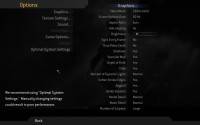- Qualcomm Launches Snapdragon 4 Gen 2 Mobile Platform
- AMD Launches Ryzen PRO 7000 Series Mobile & Desktop Platform
- Intel Launches Sleek Single-Slot Arc Pro A60 Workstation Graphics Card
- NVIDIA Announces Latest Ada Lovelace Additions: GeForce RTX 4060 Ti & RTX 4060
- Maxon Redshift With AMD Radeon GPU Rendering Support Now Available
Intel Core i7 Performance Preview

With Core i7’s launch due in just a few weeks, there’s no better time than right now to take a hard look at its performance, which is what we’re taking care of today. In addition to our usual performance comparisons with last-gen CPUs, we’re also taking an in-depth look at both QPI and HyperThreading performance, and some of our results may surprise you.
Page 4 – Test System & Methodology
At Techgage, we strive to make sure our results are as accurate as possible. Our testing is rigorous and time-consuming, but we feel the effort is worth it. In an attempt to leave no question unanswered, this page contains not only our testbed specifications, but also a fully-detailed look at how we conduct our testing.
If there is a bit of information that we’ve omitted, or you wish to offer thoughts or suggest changes, please feel free to shoot us an e-mail or post in our forums.
Test System
The table below lists the hardware for our two current machines, which remains unchanged throughout all testing, with the exception of the processor. Each CPU used for the sake of comparison is also listed here, along with the BIOS version of the motherboard used. In addition, each one of the URLs in this table can be clicked to view the respective review of that product, or if a review doesn’t exist, you will be led to the product on the manufacturer’s website.
|
Component
|
Core i7 Test System
|
| Processors |
Intel Core i7 Extreme 965 – Quad-Core, 3.20GHz, 1.30v
Intel Core i7 940 – Quad-Core, 2.93GHz, 1.30v Intel Core i7 920 – Quad-Core, 2.66GHz, 1.30v |
| Motherboard |
Intel DX58SO – X58-based, 2624 BIOS (10/23/08)
|
| Memory |
DDR3: Qimonda 3x1GB – DDR3-1066 7-7-7-20-1T, 1.56v
|
| Graphics |
Palit Radeon HD 4870 512MB (Catalyst 8.9)
|
| Audio |
On-Board Audio
|
| Storage | |
| Power Supply | |
| Chassis | |
| Display | |
| Cooling | |
| Et cetera |
|
Component
|
Core 2 Test System
|
| Processors |
Intel Core 2 Extreme QX9770 – Quad-Core, 3.20GHz, 1.30v
Intel Core 2 Quad Q9650 – Quad-Core, 3.00GHz, 1.30v Intel Core 2 Quad Q9450 – Quad-Core, 2.66GHz, 1.30v |
| Motherboard |
ASUS Rampage Extreme – X48-based, 0501 BIOS (08/28/08)
|
| Memory |
DDR3: Corsair XMS3 DHX 2x2GB – DDR3-1333 7-7-7-15-1T, 1.91v
|
| Graphics |
Palit Radeon HD 4870 512MB (Catalyst 8.9)
|
| Audio |
On-Board Audio
|
| Storage | |
| Power Supply | |
| Chassis | |
| Display | |
| Cooling | |
| Et cetera |
When preparing our testbeds for any type of performance testing, we follow these guidelines:
- General Guidelines
- No power-saving options are enabled in the motherboard’s BIOS.
- Internet is disabled.
- No Virus Scanner or Firewall is installed.
- The OS is kept clean; no scrap files are left in between runs.
- Hard drives affected are defragged with Diskeeper 2008 prior to a fresh benchmarking run.
- Machine has proper airflow and the room temperature is 80°F (27°C) or less.
- Windows Vista Optimizations
- User Account Control (UAC) and screen saver are disabled.
- Windows Defender, Firewall, Security Center, Search, Sidebar and Updates are disabled.
To aide with the goal of keeping accurate and repeatable results, we alter certain services in Windows Vista from starting up at boot. This is due to the fact that these services have the tendency to start up in the background without notice, potentially causing slightly inaccurate results. Disabling “Windows Search” turns off the OS’ indexing which can at times utilize the hard drive and memory more than we’d like.
Application Benchmarks
To help test out the real performance benefits of a given processor, we run a large collection of both real-world and synthetic benchmarks, including 3ds Max, Adobe Lightroom, TMPGEnc Xpress, Sandra 2009 and many more.
Our ultimate goal is always to find out which processor excels in a given scenario and why. Running all of the applications in our carefully-chosen suite can help better give us answers to those questions. Aside from application data, we also run two common games to see how performance scales there, including Call of Duty 4 and Half-Life 2: Episode Two.
Game Benchmarks
In an attempt to offer “real-world” results, we do not utilize timedemos in any of our reviews. Each game in our test suite is benchmarked manually, with the minimum and average frames-per-second (FPS) captured with the help of FRAPS 2.9.5.
To deliver the best overall results, each title we use is exhaustively explored in order to find the best possible level in terms of intensiveness and replayability. Once a level is chosen, we play through repeatedly to find the best possible route and then in our official benchmarking, we stick to that route as close as possible. Since we are not robots and the game can throw in minor twists with each run, no run can be identical to the pixel.
Each game and setting combination is tested twice, and if there is a discrepancy between the initial results, the testing is repeated until we see results we are confident with.
The two games we currently use for our motherboard reviews are listed below, with direct screenshots of the game’s setting screens and explanations of why we chose what we did.
Call of Duty 4
|
1680×1050
|
2560×1600
|
  |
  |
The Call of Duty series of war-shooters are without question some of the most gorgeous on the PC (and consoles), but what’s great is the fact that the games are also highly optimized, so no one has to max out their machine’s specs in order to play it. Since that’s the case, the in-game options are maxed out in all regards, except the Anisotropic Filtering, which is set to the center of the slider bar.
Half-Life 2: Episode Two
|
1680×1050
|
2560×1600
|
 |
 |
It might have been four-years-ago that we were able to play the first installment of the Half-Life 2 series, but it’s held up well with its new releases and engine upgrades. This is one title that thrives on both a fast CPU and GPU, and though it’s demanding at times, most any recent computer should be able to play the game with close to maxed-out detail settings, aside from the Anti-Aliasing.
In the case of very-recent mid-range cards, the game will run fine all the way up to 2560×1600 with maxed-out detail, minus Anti-Aliasing. All of our tested resolutions use identical settings, with 4xAA and 8xAF.
Support our efforts! With ad revenue at an all-time low for written websites, we're relying more than ever on reader support to help us continue putting so much effort into this type of content. You can support us by becoming a Patron, or by using our Amazon shopping affiliate links listed through our articles. Thanks for your support!





